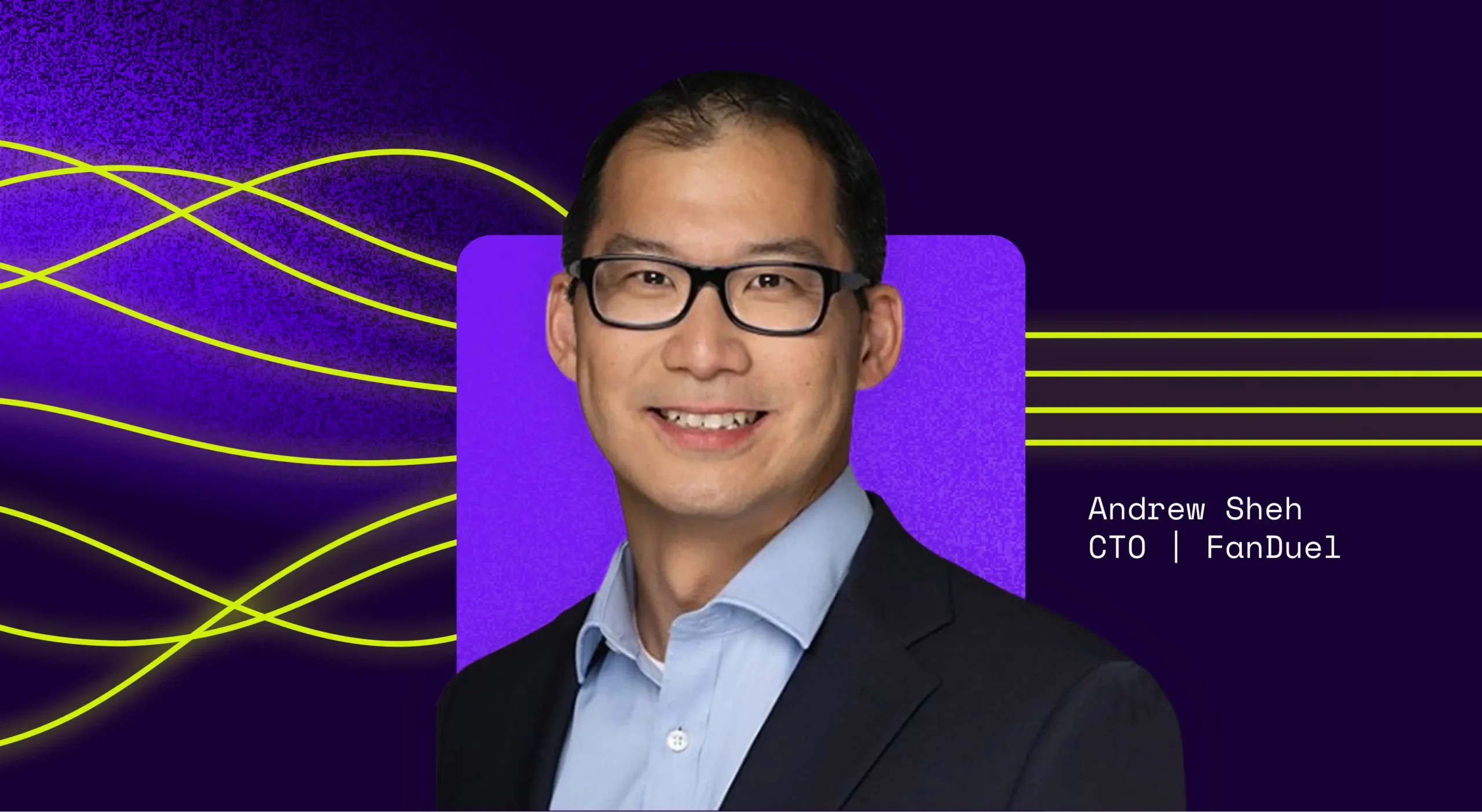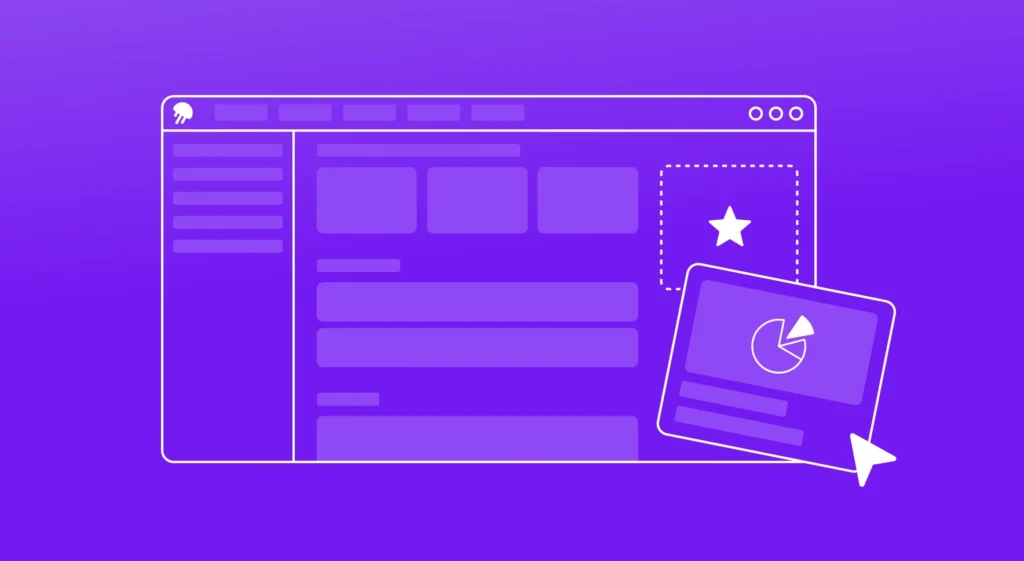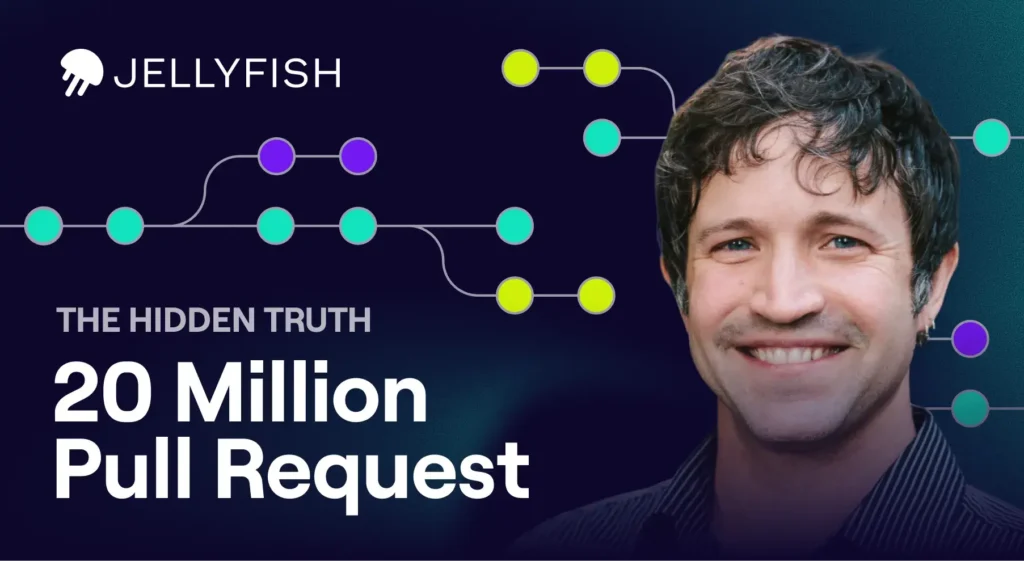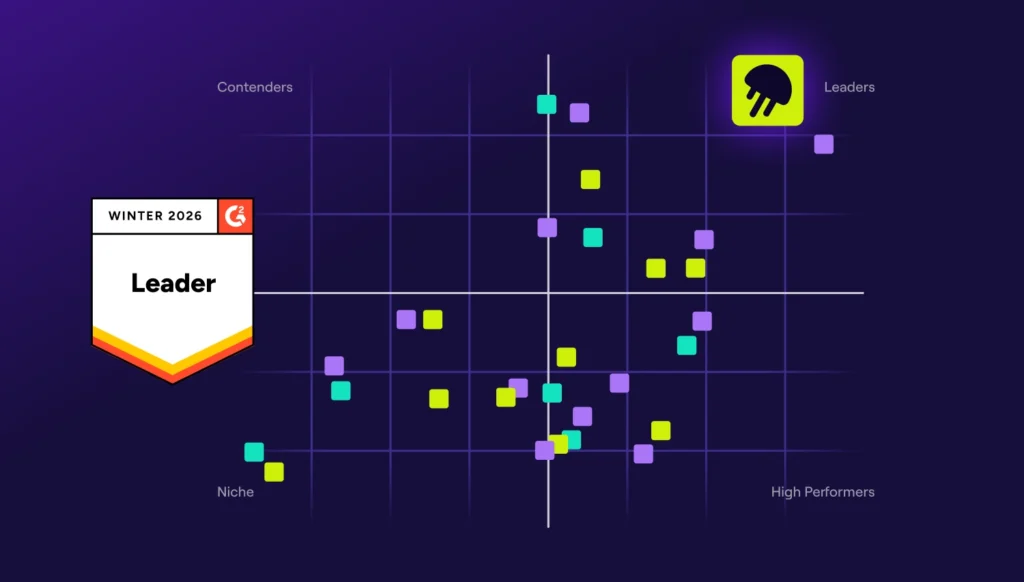In this article
Andrew Sheh is Chief Technology Officer at FanDuel, America’s number one sportsbook. With years of experience in sectors from real estate to national security, Sheh is an expert at building high-performing engineering teams and leading through change.
At last month’s GLOWLive, Sheh connected with Jellyfish co-founder and CEO Andrew Lau to share his thoughts on the AI coding revolution. Lau asked Sheh about FanDuel’s successful AI adoption and how the company measures the impact of its AI investments.
Sheh also offered advice for aspiring future leaders – find a path you’re truly interested in and enjoy the journey!
You can watch the full fireside chat or read a lightly edited version of their conversation from GLOW below.
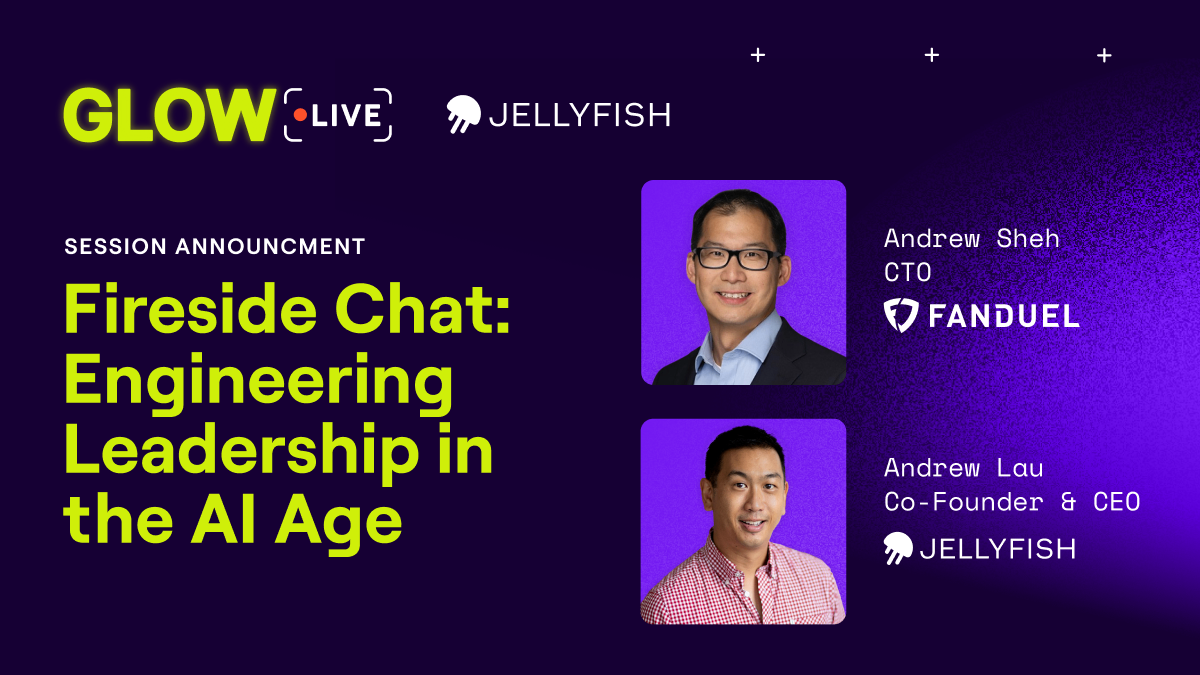
Fireside Chat: Engineering Leadership in the AI Age
In this candid fireside chat, join Andrew Lau, Jellyfish Co-Founder and CEO, and special guest, Andrew Sheh, CTO at FanDuel, as they explore the fast-moving world of AI, engineering, and what it all means for up-and-coming engineers.
Watch the VideoRead the Interview
Can you start by telling me a bit about FanDuel? How large is the company?
There are about 4,500 employees at FanDuel. Our headquarters are in New York City, and we have offices in Los Angeles, Atlanta, and Edinburgh, Scotland. Being part of Flutter – our global parent company – we also have software development centers in Portugal, Romania, Australia, and a few other countries. So FanDuel has a pretty large global footprint.
At an organization as big as FanDuel, how do you experiment with AI coding tools? Does everyone try them at once?
At FanDuel, we wanted to get AI tools into employees’ hands and start leveraging their capabilities as fast as we could. We started with a few development teams to help us understand which generative assistance tools would actually help engineers do their job. That gave us some metrics, which helped us expand our use.
Our trial period lasted around a month and a half – we wanted to sprint as fast as possible, make a decision, and jump in.
Did this new AI toolset get your hands back on the keyboard?
It got me back to the keyboard a little bit because I wanted to understand what the engineers were experiencing. But the most important part when we started experimenting was to ask developers if AI was helping them. We then had to work out how to measure its impact before we could go global.
It sounds like you set your own success metrics. Did you determine those before you got started or as you went along?
We set some general metrics, but we didn’t want to prescribe percentages or look at extra minutes of productivity. Instead, we wanted to know how the tools felt as a side-by-side companion and whether or not they generated accurate code. We evolved our metrics to understand whether we were using the right tools and if they were useful to developers.
Once you decided to go ahead, how did you drive change across the organization? How do you support people who are reluctant to adopt AI coding tools?
We use GitHub Copilot, our code assistance tool, to train employees in what usage can look like and provide examples. To help engineers understand the limitations, we gave engineers the chance to complete small zero-to-one efforts using only AI. It was important for us to provide guidance and best practices, but also allow some freedom.
Did you have any teams that rejected AI tools outright?
I wouldn’t say any teams rejected AI tools outright, but it took longer to reach high usage in some cases. We looked at the percentage of code being generated by the assistant and, where we saw low numbers, we spoke to those teams to find out what was going on and whether the tool was useful. We didn’t force it; we wanted people to embrace the fact that AI tools are here to help.
With technology advancing at speed, how can organizations move fast enough?
I think it takes a balanced approach, and it differs by organization. A company like FanDuel that has a lot of products in a regulated space has to deliver against a very tightly coupled industry, so you move at the pace that’s critical for your organization.
You need a vision and a goal – constantly pivoting and experimenting with different tools is frustrating and distracting for employees.
How do you think about outcomes and determine the yield on AI investments?
When employees are first introduced to AI, there is some skepticism — engineers worry they’re going to be replaced by AI. To get teams past the safety point, you have to explain that the tools are there to help them get their jobs done and spend time on more exciting, challenging tasks. Using data to show engineers how much time they’re saving thanks to automated test coverage or documentation helps them realize the benefits.
When working with the CFO, you can look at your organization to identify areas that could be more efficient. I don’t mean staffing or human resources; rather, how can you get things done well, accurately, and with less human intervention? We look at functions that require a lot of people, such as re-forecasting data when we do budgets every quarter, and set goals around that.
When you look forward, what are you thinking about in terms of your team and the company? What worries you? What are you watching out for?
You worry that you’re not doing enough. You look to the left, and organizations similar to yours are moving faster and adopting quicker. Then you look to the right and see you’re doing better than some people, and you get complacent.
There’s no good meter stick to say what’s good and what’s fast. It’s important to focus on your own organization and understand how AI is helping your business move forward.
Now a fun question: when you get a spare moment, do you have any side projects that you can test some of this stuff out on?
My eldest son has gone through coding classes, and it can take me a beat to work something out – kids are coming in advanced! So I try to help my kids in my free time, but I have to learn everything again because even math homework isn’t the same anymore. Everything is changing quickly, and we’re always learning.
Do you have any quick tips for future leaders who want to follow in your footsteps?
I would say to follow a path that really interests you. If you continue learning and surround yourself with people you enjoy spending time with, you’re always going to look back and say, “That was great.”
I’ve worked in real estate, I’ve helped launch satellites into space, I’ve worked for national intelligence agencies, and now I’m working in sports betting. You should enjoy the journey and follow what makes you happy.
More from GLOWLive 2025
More from GLOWLive 2025
Check out all the highlights from GLOWLive 2025 to learn more about the impact of AI coding tools on software development.
In his opening keynote, Jellyfish CEO Andrew Lau talked about the speed at which AI coding tools are evolving, and what that might mean for the future of the industry. Watch a full replay here.
Adam Ferrari, Jellyfish advisor, and Ryan Kuchova, SVP & Field CTO, followed up with a deep dive into the software engineering intelligence maturing model. Access the recording to find out about aligning engineering efforts with business goals and optimizing performance.
Rounding up the event, Jellyfish Head of Product Krishna Kannan explored the role of AI coding tools in engineering and overcoming barriers to adoption with executives from three leading technology companies. Check out the panel discussion.
About the author

Hannah McKeen is Senior Customer Marketing Manager at Jellyfish.
